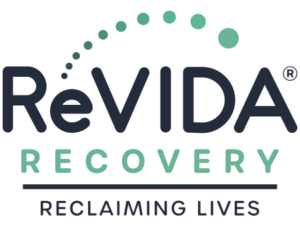Table of Contents
How Does Buprenorphine (Suboxone®) Work?
Before we discuss how buprenorphine (Suboxone®) works, you may be reading this thinking about all the many ways things have not worked out well lately for you or your loved one that is struggling with opioid addiction.
You may be thinking that time is both precious and fleeting in life. You may be observing that you or your loved one spends too much time focused on getting or using opioids. You or your loved one may be giving up meaningful activities to instead shift time, attention, energy, and efforts to taking opioids.
Buprenorphine (Suboxone®) can be a lifesaver in the literal sense that it allows the person struggling with opioid addiction to continue to live. But it may also be a lifesaver in that buprenorphine (Suboxone®) has the potential to greatly enhance the overall quality of life for both the person struggling with opioids and the loved ones around them.
Read on to learn more about what buprenorphine (Suboxone®) is, how buprenorphine (Suboxone®) works in the body, common myths about buprenorphine (Suboxone®) and evidence to challenge these common myths, how to know when opioid use has become problematic, how common opioid use and addiction is in Tennessee, and treatment available at ReVIDA Recovery®.
What Is Buprenorphine (Suboxone®)?
According to the National Alliance on Mental Illness (NAMI), buprenorphine (Suboxone®) is a medication made up of buprenorphine and naloxone that helps those living with opioid use disorder. Buprenorphine (Suboxone®) comes in a tablet or film form that dissolves in the mouth.
Examples of opioids include heroin and prescription pain relievers such as hydrocodone, oxycodone, morphine, and fentanyl. Opioids can be obtained via prescription or alternative methods (from street/drug dealers, trading, stealing).
Those with an opioid use disorder have a few, some, or many problems that directly stem from misusing opioids. Examples of problems that are a result of opioid misuse could be work, school, and interpersonal relationship issues.
The recommended daily maintenance dose of buprenorphine (Suboxone®) tablets or films is typically 16mg/4mg taken one time per day. Buprenorphine (Suboxone®) will begin working shortly after taking one dose. It is important to note that only your healthcare provider can determine the correct dosage form or dose of buprenorphine (Suboxone®) for you.
Avoid drinking alcohol, using sedatives, or taking other opioid pain medications (codeine, hydrocodone, oxycodone, or morphine), or using illegal drugs while you are taking buprenorphine (Suboxone®). Taking alcohol or other drugs may increase the harmful effects (sedation, overdose, death) of buprenorphine (Suboxone®).
How Does Buprenorphine (Suboxone®) Work?
According to the National Alliance on Mental Illness (NAMI), buprenorphine is the active drug in buprenorphine (Suboxone®). Buprenorphine is a partial opioid agonist. A partial opioid agonist works somewhat like an opioid, but the effect of a partial opioid agonist is weaker than full agonists like heroin and methadone.
According to Harvard Health Publishing, buprenorphine (Suboxone®) works by tightly binding to the same receptors in the brain as other opiates, such as heroin, morphine, and oxycodone.
By binding to the same receptors, buprenorphine (Suboxone®) blunts or reduces intoxication from other drugs (heroin, morphine, oxycodone, etc.), prevents cravings, and allows many people to successfully transition from struggling with opioid addiction to a more normal, safe, and healthy lifestyle.
Buprenorphine (Suboxone®) has a ceiling effect. A ceiling effect means the opioid effects level off even with ongoing, frequent use. The ceiling effect helps reduce the risk of a person having misuse or dependency, as well as having side effects.
Take Caution When Reducing or Stopping Suboxone
Similar to other opioids, buprenorphine can cause physical dependence when taken daily for a long period of time. This means withdrawal symptoms from buprenorphine (Suboxone®) are possible if Suboxone is greatly reduced or stopped all of a sudden. Missing doses of buprenorphine (Suboxone®) may increase your risk of relapse.
Withdrawal symptoms when stopping buprenorphine (Suboxone®) can potentially occur, but are not as severe as the withdrawal symptoms with other full opioids like heroin.
For your health and safety, talk to your medical provider before stopping or reducing buprenorphine (Suboxone®).
Challenging Common Myths About Suboxone
According to Harvard Health Publishing, there are five common myths about Suboxone, and there is evidence to challenge these myths:
Myth #1: You are not really in recovery if you are on buprenorphine (Suboxone®).Drug and alcohol addiction is more likely to be viewed today as similar to a medical condition.
If buprenorphine (Suboxone®) is viewed as a medication for a chronic condition, then it should be no more disgraceful to take buprenorphine (Suboxone®) than it is to take insulin for diabetes.
The message of “You are not really in recovery” is harmful and shameful to people that take buprenorphine (Suboxone®). This message also does not align with the medical reality of effective addiction treatment.
Myth #2: People frequently misuse buprenorphine (Suboxone®).
Buprenorphine (Suboxone®), like any opiate or other medication, has the potential to be misused. Buprenorphine (Suboxone®) is a partial opioid agonist and thus causes much less euphoria (great happiness and excitement) in comparison with other opiates such as heroin and oxycodone.
Buprenorphine (Suboxone®) is often used to help manage withdrawal from opiates like heroin or fentanyl.
Myth #3: It is as easy to overdose on buprenorphine (Suboxone®) as it is to overdose on other opiates.
It is very difficult to overdose on buprenorphine (Suboxone®) by itself.
Given that buprenorphine (Suboxone®) is a partial opiate receptor agonist, there is a limit to how much the opioid receptors can be activated by using buprenorphine (Suboxone®) alone.
Typically, overdose on buprenorphine (Suboxone®) occurs when it is used in combination with other substances like benzodiazepines.
Myth #4: Buprenorphine (Suboxone®) is not a treatment for addiction if you aren’t getting therapy along with it.
Treatment with buprenorphine (Suboxone®) alone, without therapy, has been proven to be effective for those struggling with opioid addiction.
The outcome can be even more effective if buprenorphine (Suboxone®) is combined with additional sources of support such as therapy and recovery coaching.
Combination treatment of buprenorphine (Suboxone®) and therapy is ideal but is not absolutely necessary to gain positive outcomes.
Myth #5: Buprenorphine (Suboxone®) should only be taken for a short period of time.
Patient preference should be taken into consideration when developing a long-term treatment plan. If we take the stance of addiction aligning with chronic medical conditions, we would not expect a diabetic person to go without their lifesaving insulin.
How Do You Know If You or Your Loved One Has an Opioid Use Problem?
Given certain opioids may be prescription medications, it may be difficult to determine if your use has crossed over into misuse.
Today, to determine if opioid use is problematic, medical and mental health professionals ask questions to see if your use aligns with the symptoms of opioid use disorder, which is a type of substance use disorder.
According to the American Psychiatric Association, the “Diagnostic and Statistical Manual of Mental Disorders, 5th Edition” (DSM-5) describes opioid use disorder as a problematic pattern of opioid use that leads to problems or distress, with at least two of the following symptoms occurring within a 12-month or at least a one-year period:
- Regular experience of withdrawal and the use of opioids more frequently to mitigate said withdrawal symptoms.
- Strong cravings to use opioids when you haven’t taken any recently.
- Requiring more and more opioids to obtain the same effect as before.
- Trying to cut down on opioid use, but being unable to.
- Spending significant amounts of time trying to obtain opioids, especially if neglecting other family, job, or educational duties in order to do so.
- Continuing opioid use despite having recurring social or interpersonal problems.
- Reducing or stopping time spent in activities you previously enjoyed.
- Continuing use despite evident physical, mental, family, or career problems as a result of use.
- Tolerance (need for increased amounts or diminished effect with continued use of the same amount)
How Common Is Opioid Use and Addiction in Tennessee?
According to the National Institute on Drug Abuse, in Tennessee in 2018:
- Drug overdose deaths involving opioids totaled 1,307 deaths (a rate of 19.9 per 100,000 standard population).
- Deaths involving synthetic opioids other than methadone (mainly fentanyl and fentanyl analogs) increased from 590 (a rate of 9.3) in 2017 to 827 (a rate of 12.8).
- Heroin-involved deaths were trending up with 369 deaths (a rate of 5.7).
- Prescription opioid-related deaths declined from 739 deaths (a rate of 11.1) in 2016 to 550 (a rate of 8.2) in 2018.
According to the 2019 National Survey on Drug Use and Health and the National Survey of Substance Abuse Treatment Services, among people 12 or older in Tennessee, the yearly average percentage of opioid use disorder in the past year did not significantly change between 2015 to 2017 and 2017 to 2019.
During 2017 to 2019, the yearly average prevalence of past-year opioid use disorder in Tennessee was 0.9% (or 50,000), which is similar to both the regional average (0.8%) and the national average (0.7%).
Buprenorphine (Suboxone®) Treatment at ReVIDA Recovery®
ReVIDA Recovery® offers a Suboxone treatment program for Tennesseans. Suboxone is a medication used in medication-assisted treatment (MAT). MAT is the combination of counseling and medication prescribed by doctors and other medical professionals to aid people in overcoming addiction and meeting their recovery goals.
Buprenorphine (Suboxone®) can be a useful tool to aid in detoxing from opioids. The MAT at ReVIDA Recovery® is supervised by physicians, licensed therapists, certified counselors, care coordinators, and peer recovery specialists.
You may be wondering: Is buprenorphine (Suboxone®) a good fit for my opioid treatment or my loved one’s treatment? The best route to determine this is to meet with a medical doctor or other medical professional to discuss your medical history, symptoms, and see if buprenorphine (Suboxone®) would be a recommended medication for you.
It is often not easy to locate a MAT provider in Tennessee. As of 2020, there were 26 counties in the state without a buprenorphine (Suboxone®) provider. ReVIDA Recovery® is ready and able to be a buprenorphine (Suboxone®) provider for you or your loved one in need.
Structured Outpatient Programs at ReVIDA Recovery®
ReVIDA’s outpatient program is a flexible and structured treatment. Our evidence-based, scientific treatment includes individual and group therapy, education classes, and 12-step meetings.
The Behavioral Healthcare Team is composed of licensed therapists, certified counselors, care coordinators, and peer recovery specialists. We help connect you to resources and community partners.
Call ReVIDA Recovery® to Begin Your Journey Toward Recovery
To begin buprenorphine (Suboxone®) treatment for yourself or a loved one residing in Tennessee, please contact ReVIDA Recovery® at (844) 972-4673.
FAQs:
How does Suboxone work?
According to Harvard Health Publishing, buprenorphine (Suboxone®) works by tightly binding to the same receptors in the brain as other opiates, such as heroin, morphine, and oxycodone. By binding to the same receptors, Suboxone blunts or reduces intoxication from other drugs (heroin, morphine, oxycodone, etc.), prevents cravings, and allows many people to successfully transition from struggling with opioid addiction to a more normal, safe, and healthy lifestyle.
How long does it take Suboxone to work?
According to the National Institute on Drug Abuse, those using buprenorphine (Suboxone®) will notice a major improvement in withdrawal symptoms within 20 to 30 minutes of taking buprenorphine (Suboxone®). If this is not the case, contact your healthcare provider.
Does Suboxone help your mood?
According to a 2017 study entitled “Effects of Buprenorphine on Responses to Emotional Stimuli in Individuals with a Range of Mood Symptomatology,” by Anya K. Bershad, Ph.D., Nicholas A. Ruiz, B.A., and Harriet de Wit, Ph.D. buprenorphine (Suboxone®) has been shown to modify or change responses to emotional stimuli and may have antidepressant properties. In preclinical studies, buprenorphine (Suboxone®) showed antidepressant-like and anxiolytic-like (anxiety-reducing) effects. A few clinical studies suggest buprenorphine (Suboxone®) may reduce symptoms of depression in patients. This study has shown that low doses of buprenorphine (Suboxone®) reduce responses to negative emotional stimuli in healthy adults.











